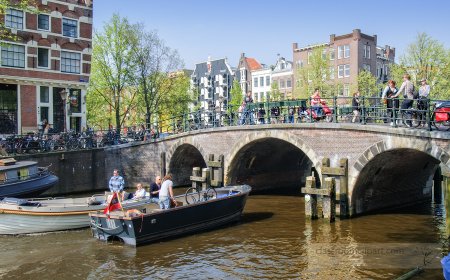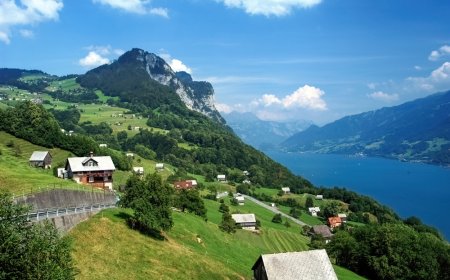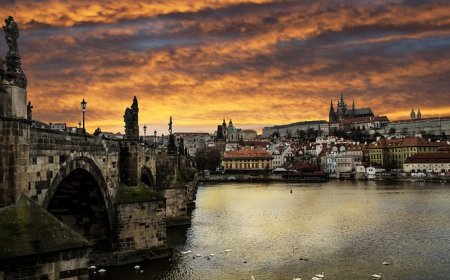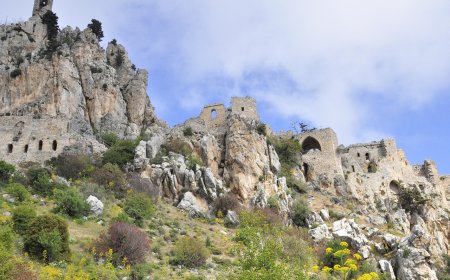Austria: Geography, Culture, and History for Students
Learn about Austria for kids. Explore mountains, music, and culture in this European country.
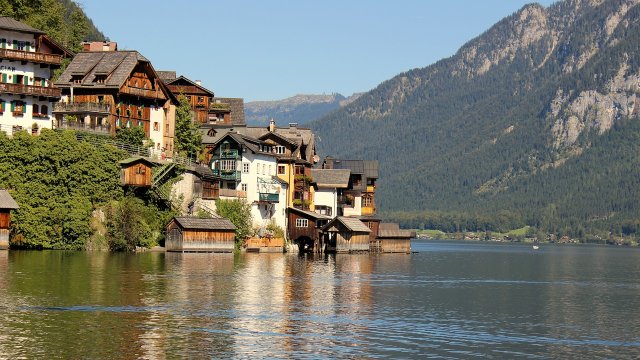
🇦🇹 Austria: Mountains, Music, and History in the Heart of Europe
SEO Title: Austria: Geography, Culture, and History for Students
Meta Description: Explore Austria’s beautiful mountains, classical music, history, and traditions in this student-friendly article. Learn about Vienna, Austrian food, and famous composers.
Slug: /countries/austria
Keywords: Austria for students, Austrian geography, Austria history, Vienna for kids, Austrian music and composers, European countries, student article on Austria
🗺 Introduction
Austria is a landlocked country in Central Europe, famous for its snowy mountains, classical music, and beautiful cities. Known for its rich history and stunning landscapes, Austria has been home to world-famous musicians, emperors, and inventors. Today, it is a peaceful, modern country that blends nature, tradition, and culture.
In this article, you’ll explore Austria’s geography, people, food, history, and daily life. From the bustling streets of Vienna to the snowy peaks of the Alps, Austria is full of wonder and learning opportunities.
🌍 Geography and Location
Austria is located in the middle of Europe and shares borders with eight countries: Germany, Czech Republic, Slovakia, Hungary, Slovenia, Italy, Switzerland, and Liechtenstein. This makes it a cultural crossroads between Western and Eastern Europe.
One of Austria’s most famous natural features is the Alps, a mountain range that covers the western and southern parts of the country. These mountains offer skiing in winter, hiking in summer, and stunning views all year round.
The rest of Austria is made up of rolling hills, lakes, and fertile valleys. The Danube River, one of Europe’s longest rivers, flows through the country and connects many cities and towns.
Austria has a temperate climate, with cold winters and warm summers. Snow is common in the mountains, while the lower areas experience all four seasons clearly.
🏙 Cities and Regions
The capital of Austria is Vienna, a city famous for its palaces, music, and coffee culture. Vienna has been called the City of Music because so many great composers lived and worked there, including Mozart, Beethoven, and Strauss. The city is full of art museums, theaters, and historic buildings like the Hofburg Palace and St. Stephen’s Cathedral.
Other major cities include:
Salzburg, the birthplace of Mozart and known for its baroque architecture
Innsbruck, a city in the Alps famous for skiing and winter sports
Graz, known for its universities and medieval city center
Linz, a city on the Danube with a mix of history and modern industry
Austria is divided into nine federal states (called Bundesländer), each with its own culture, dialects, and regional traditions.
👨👩👧👦 People, Language, and Culture
Austria has a population of about 9 million people. The official language is German, but many people speak Austrian German, which has different accents and vocabulary. In some regions, you’ll also hear Hungarian, Slovenian, or Croatian spoken by minority groups.
Austrian culture is influenced by its long history as part of the Habsburg Empire, which ruled much of Europe for centuries. Austrians value music, education, and nature, and they enjoy a high quality of life.
Austrians often enjoy outdoor activities like skiing, hiking, and biking. They also love spending time in cozy cafes, where they drink coffee and eat cakes while reading or chatting. Traditional clothing like lederhosen and dirndls are still worn during festivals and celebrations.
🍽 Food and Traditions
Austrian food is delicious and comforting. Meals often include meat, potatoes, vegetables, and soups. Austrian desserts are especially famous, and many people visit cafes just for a slice of cake.
Popular Austrian foods include:
Wiener Schnitzel, a thin, breaded veal or chicken cutlet
Käsespätzle, cheesy pasta topped with crispy onions
Goulash, a stew made with beef, onions, and paprika
Apfelstrudel, a warm apple pastry filled with cinnamon and raisins
Sachertorte, a rich chocolate cake with apricot jam, created in Vienna
Austria celebrates holidays like Christmas, Easter, and National Day (October 26), as well as many music festivals, harvest fairs, and winter markets. One special tradition is the Vienna New Year’s Concert, watched by millions around the world each January 1st.
🏛 History of Austria
Austria has a long and complex history. In ancient times, the region was part of the Roman Empire. During the Middle Ages, it became home to the powerful Habsburg family, who ruled the Austro-Hungarian Empire for over 600 years.
Under Habsburg rule, Austria became one of the most powerful nations in Europe, known for its culture, art, and political influence. The capital, Vienna, was the center of empire and learning.
After World War I, the empire broke apart, and Austria became a republic. In World War II, Austria was taken over by Nazi Germany. After the war, Austria regained its independence and declared itself neutral, meaning it does not join military alliances.
Today, Austria is a democratic republic, a member of the European Union, and one of the most peaceful and prosperous countries in the world.
🌿 Nature and Environment
Austria’s natural beauty is one of its greatest treasures. The Alps are home to forests, rivers, and rare wildlife like ibexes and eagles. National parks protect these habitats and offer trails for hiking and skiing.
Austrians take great care of the environment. Recycling is common, and many homes use solar or hydro energy. Public transportation, like trains and trams, is widely used and helps keep the air clean.
In spring and summer, wildflowers bloom across the meadows, while in winter, snow blankets the mountains. Many Austrians live close to nature and enjoy outdoor life all year long.
🧠 Why Austria Matters
Austria has shaped the world through its music, art, and peaceful leadership. Its musicians, thinkers, and scientists have made lasting contributions to history. The country also shows how tradition and modern life can blend together beautifully.
Whether you’re exploring castles, skiing in the Alps, or listening to Mozart, Austria offers a rich experience filled with learning, beauty, and culture.
📚 Vocabulary List
Word Definition
Alps A large mountain range that runs through Austria and other European countries
Wiener Schnitzel A traditional Austrian dish made of thin, breaded, fried meat
Neutral Not taking sides in wars or joining military alliances
Bundesländer The German word for the nine federal states of Austria
Lederhosen Traditional short leather pants worn by men in Austria and southern Germany
Apfelstrudel A warm pastry filled with sweetened apples and spices
Habsburg A powerful royal family that ruled Austria and much of Europe for centuries
Hydro energy Electricity made from moving water, often used in Austria’s mountains
✨ Fun Facts About Austria
Austria has over 13,000 miles of hiking trails.
The world-famous composer Wolfgang Amadeus Mozart was born in Salzburg.
The Vienna Boys’ Choir is one of the oldest and most respected children’s choirs in the world.
Austria has hosted the Winter Olympics twice.
The famous Ferris wheel in Vienna’s Prater Park has been turning since 1897.
👧🧒 Kid-Friendly Summary
Austria is a beautiful country full of mountains, music, and castles. People speak German, ski in the Alps, and eat yummy dishes like schnitzel and apple strudel. Vienna is a city where composers like Mozart once lived. Austria is peaceful, clean, and full of fun things to learn and explore!
🧠 Interactive Quiz: How Well Do You Know Austria?
1. What is the capital of Austria?
A) Salzburg
B) Vienna
C) Graz
D) Innsbruck
2. Which mountain range runs through Austria?
A) Rockies
B) Andes
C) Alps
D) Himalayas
3. What famous composer was born in Austria?
A) Beethoven
B) Bach
C) Mozart
D) Vivaldi
4. What is a “Wiener Schnitzel”?
A) A type of hat
B) A dessert
C) A breaded meat dish
D) A musical instrument
5. What is the Danube River known for?
A) Being the shortest river
B) Flowing through Austria and other countries
C) Turning into a waterfall
D) Starting in Africa
6. What language do people speak in Austria?
A) Austrian
B) French
C) German
D) Dutch
7. What are lederhosen?
A) A kind of pastry
B) A mountain path
C) Traditional short leather pants
D) A type of flower
8. What is Austria’s position in world wars today?
A) It leads armies
B) It is neutral and peaceful
C) It doesn’t allow voting
D) It builds weapons
Answer Key:
1: B
2: C
3: C
4: C
5: B
6: C
7: C
8: B
📘 National Standards Alignment
Geography Standards:
Standard 1: Geographic tools and map skills applied to Austria
Standard 4: Physical and cultural characteristics of Austria
Standard 6: How human culture shapes the environment
Standard 10: Patterns of human settlement and cultural identity
NCSS Themes:
Theme 1: Culture
Theme 2: Time, Continuity, and Change
Theme 3: People, Places, and Environments
Theme 5: Individuals, Groups, and Institutions
Theme 8: Science, Technology, and Society
Common Core ELA (Grades 5–8):
RI.5–8.2: Summarize key information
RI.5–8.4: Determine vocabulary in context
W.5–8.2: Write explanatory/informative texts
SL.5–8.1: Engage in collaborative discussions


















































